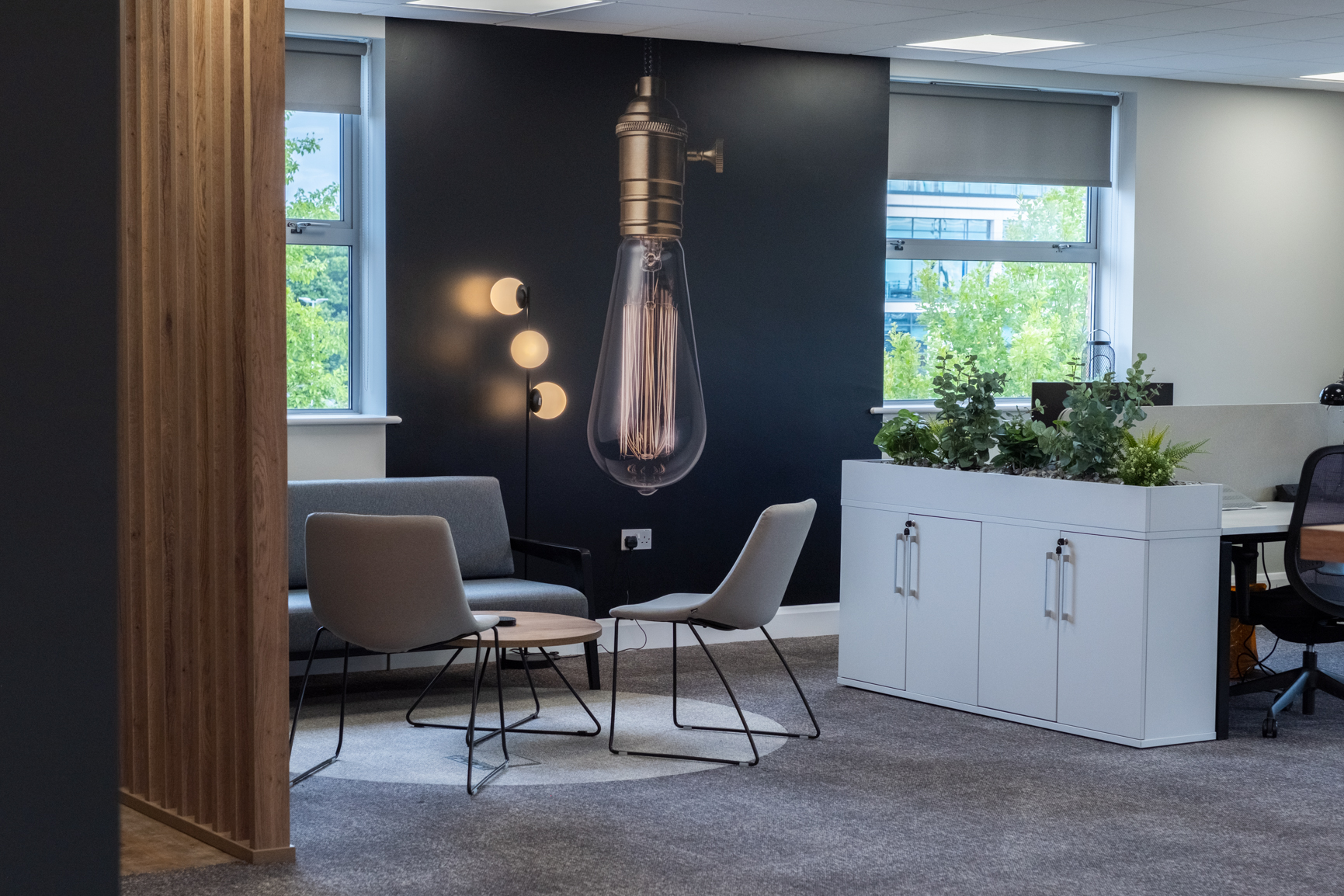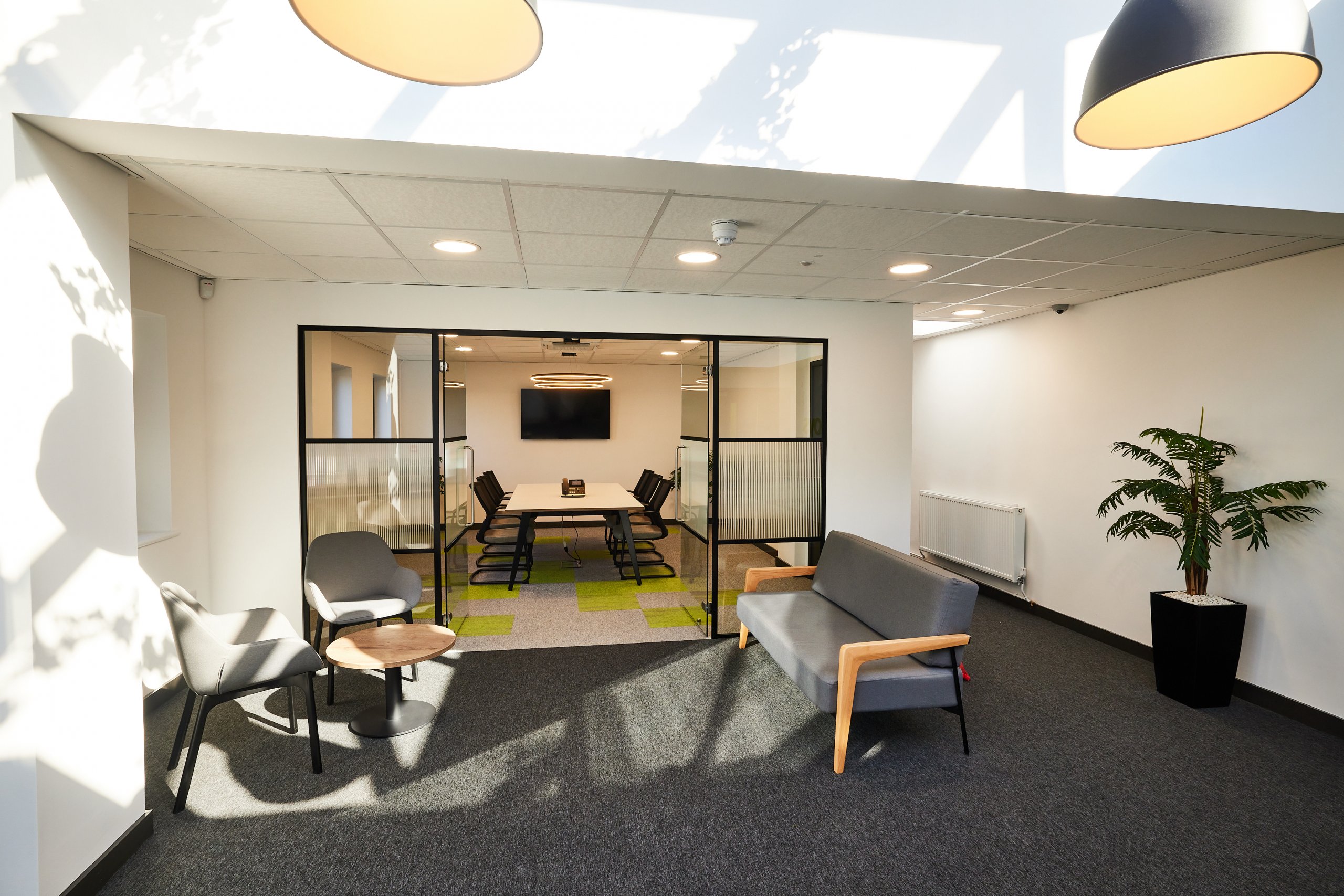The past few years have fast-forwarded work trends; due to the impact of the pandemic, instead of the evolution we’d expect, we’ve seen revolution.
Working from home suddenly became an inescapable part of everyone’s employment. This sudden imposition ended up giving many employers the courage to retain an element of this flexibility, or hybrid working, in their workforces as we all return to a ‘new normal’.
Below we’ve outlined our top 4 ‘trends’ for the future of the working environment:

Trend 1: More Agile-Friendly Work Spaces
A recent poll by company Gartner found that almost 50% of employees are now likely to work remotely, at least some of the time – compared with 30% before the pandemic. That means offices no longer have to make individualised workspaces for every single employee.
Spaces can be more function-led, allowing for more flexibility in hiring procedures as well as creating an environment more conducive to bringing out the best in employees. Formal and informal spaces, shared desk space, and remote-friendly software have all been instrumental in creating the best working environments – find out more about Agile work environments here.
Trend 2: More Awareness of employees’ Work-Life Balance
Remember when the whole nation had a week-long giggle about Professor Kelly’s unintended family visitors during a BBC live video-linked interview on Korea?
https://www.youtube.com/watch?v=Mh4f9AYRCZY
How the world has changed! Now that many employees have relied upon Zoom or other video-linked software for around two years, employers’ colleagues and bosses as much more aware that work is a part of life. Where employees might typically have hidden family commitments or been embarrassed by unprecedented interruptions from children and pets, we have all become more aware that work and life need to coexist in order

for us to do either of these things successfully. Hand-in-hand with that is the benefit this has created for working parents. Employers have seen how employees with children have juggled family and working life commitments, oftentimes just as successfully as childless ones. This has led to a more profound level of trust in ‘working parents’, flexible working hours and less stress of them to justify their job spots.
As employees and employers consider the realities of returning to working from a workplace, at least some of the time, many have made allowances to adapt the working environment for easier life. Whether that means flexibility on working from home (much easier to let the boiler man in if you’re free to work from home two days per week), allowing employees to disappear for an hour or two at school collection time and finish their hours later, or even considering a task-oriented labour model (where employees simply have to get the job done, however long it takes), employers are getting much more out of their employees through this evolution towards trust and open dialogue. It’s a trend we had forecast anyway, that has been driven into praxis 10 times quicker by the imposition of the pandemic.

Trend 3: More Integrated Use of Tech
Suddenly workplaces that had repeatedly shied away from tech updates were faced with a workplace that couldn’t, well…work. Office-based, paper-led organisations suddenly had to embark on a complete overhaul to actually enable their workforce to complete any tasks from home.
Sharing documentation online and taking part in virtual meetings became the norm, so many of those slightly outdated workplaces had to really redesign themselves almost overnight.
Gartner analysis illustrates that 16% of employers are now utilising tech more frequently to monitor their employees too, with examples including virtual clocking in and out, computer
usage tracking, and higher levels of online email and internal comms.
Whilst some focus on these stats in the name of productivity, others focus on employee engagement and mood to better garner a sense of their employees’ working experience. The big investment (and concern) here has always been in ensuring that both employees’ and the company’s data is safe; responsibly protected, responsibly used, and responsibly stored. Data breaches are all the more likely if businesses fall behind in this regard, and with more content online than ever before it’s more likely that this will cause a significant threat to the business.
Trend 4: More Transparency as to which are the Best Employers
An evolution that we’ve seen over the past decade, even pre-pandemic, is a move towards demands for transparency from businesses and their leaders. This is an employee’s world, as companies vie against each other to attract the cream of the crop (especially now the net can be cast internationally, as working remotely has become so easy).
The COVID-19 pandemic has been the perfect way for reputable companies to proudly showcase their ethos, as the ways in which employees were treated was clear pretty immediately.
Through the pandemic and into this ‘endemic’ era, companies are still being judged on the ways in which they have acted to prioritise their employees’ health and safety (or not), and make this difficult time an easier one for the staff who carry their business, day to day.
Topline figures that made a difference to morale were when CEOs and leaders made sure that the financial impact of the pandemic was not borne by the brunt of the lowest paid in their company food chain, but by those in the top jobs, with their generally larger disposable income. Ditto, investing in health and safety protections for those staff above and beyond government mandated PPE, even though a pricey outlay, has truly concreted some firms’ reputations for being people-centred not profit-led.
Our four trends have been put on fast-forward by the pandemic, but were trends we saw coming over the next decade anyway. What trends do you envisage in your working career?